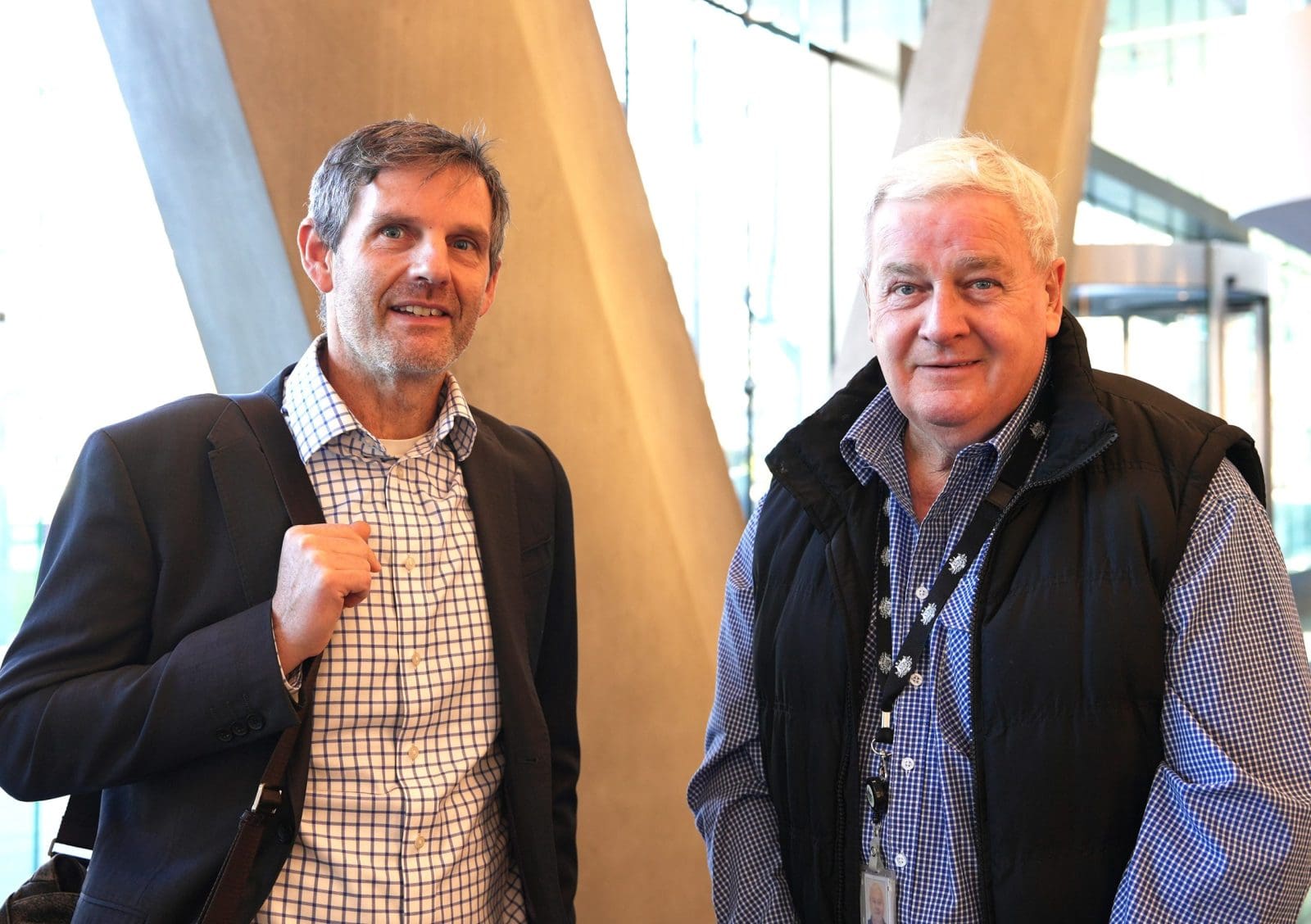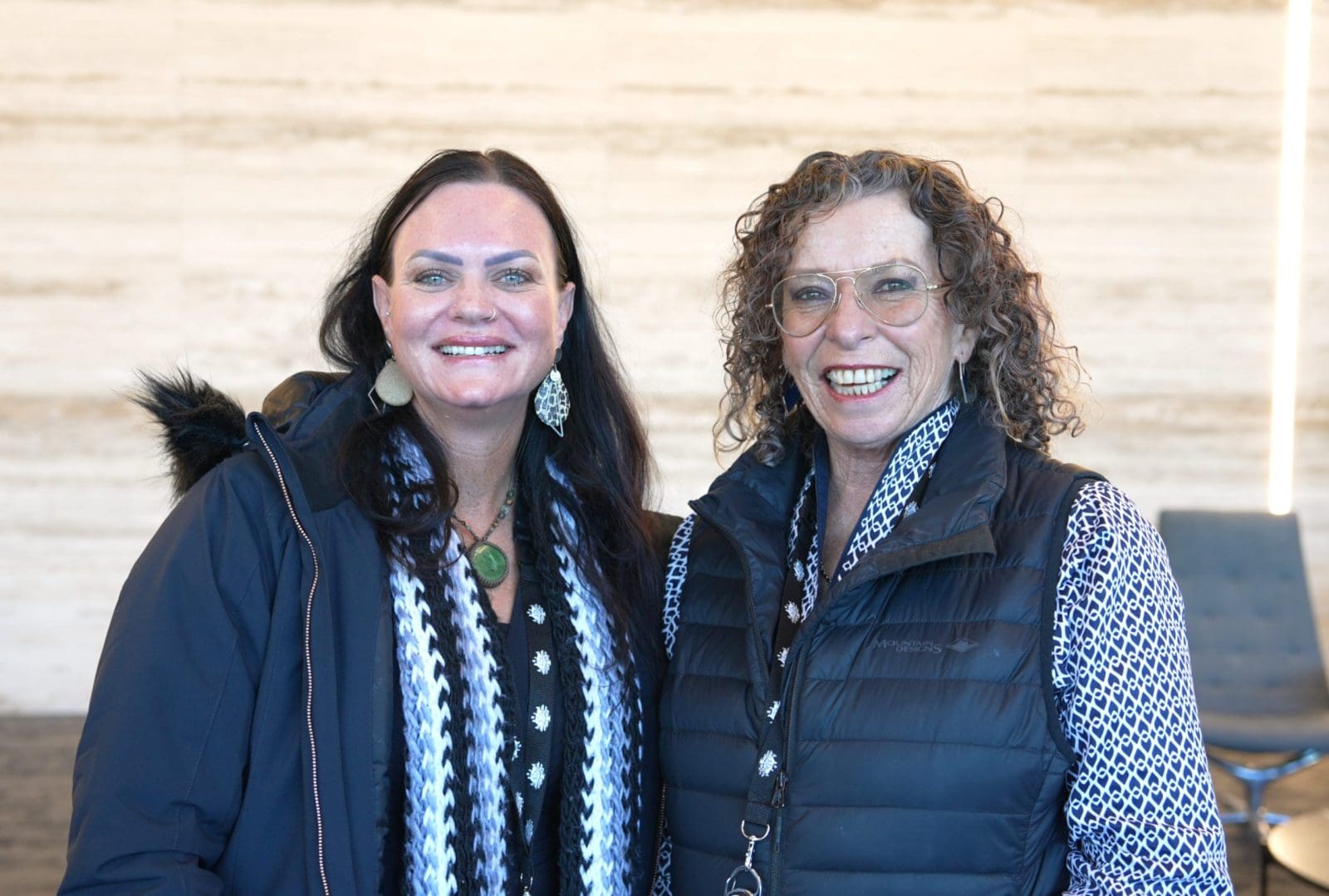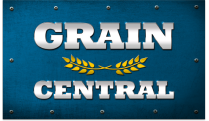
ABARES executive director Dr Jared Greenville and southern Mallee farmer and survey collector Jim Ross. Photo: DAFF
DATA collection for ABARES and its predecessors is turning 70 this year, and its team of officers has already started to deploy.
Among them is farmer Jim Ross, who spends around three months in total away from his wheat, barley, lentil, and vetch crops each year between now and September to take up his casual role.
It started in the tough years of the millennium drought, from which the southern Mallee did not escape.
“Back in those years…I was looking for something to do off farm,” Mr Ross said.
“This ad popped up in The Weekly Times, I thought I’d give it a crack, and I’m still doing it.”
“I’ve been doing it 18 or 20 years.
His run comprises three legs, with breaks in between to enable him to catch up on the data entry and editing required from survey respondents, plus work on the farm.
Mr Ross said the on-farm interviews he conducts take roughly an hour, and cover everything from debt, land use, farm structure, and expenditure to seasonal conditions.
His first run takes in mixed farming country on the South Australian-Victorian border including Bordertown, Nhill, and Kaniva.
“I do that in July…and that takes three weeks plus a bit.”
Survey collectors interview participants between June and December, and when the farmer will not be flat out planting, harvesting, shearing, mustering, or doing any of the other high-intensity tasks on the agricultural calendar.
“We’ve got to do it when it suits the season.
“In August-September, I usually go to Darwin, and come halfway down the Territory, and out to both borders.”
The run includes many cattle operations, and includes some cropping, mostly of cotton.
“I’m up there for about three weeks.
“I take two weeks between each run, and while I’m home, it gives me the chance to do the data and what I need to do on the farm.
“The last one I do starts in the Western Australian Wheatbelt…at Merredin and goes out to Southern Cross and Leonora.
“It’s a mixture of cropping and sheep country, and then out into cattle country.”
Mr Ross visits many repeat respondents, some of whom he keeps in touch with throughout the year on a non-official basis.
The current survey has invited a total of 1618 participants to take part.
They comprise continuous-cropping, mixed, and dairy farms, as well as sheep and/or beef grazing properties, with the breakdown across jurisdictions being:
- New South Wales 406;
- Queensland 385;
- Victoria 301;
- South Australia 201;
- Western Australia 204;
- Tasmania 75; and,
- Northern Territory 46.
If a farm is sold, ABARES removes the farm business from its sample, but it may be invited to participate in future years.
“We have ‘reserve’ farms already identified in the sample, so we approach a reserve farm if the primary farm is unable to participate,” a spokesperson for ABARES, as part of the Federal Government’s Department of Agriculture, Fisheries and Forestry, said.
Farms are selected by region, size, and production to ensure an accurate national picture, and the sample is selected from the population list provided by the Australian Bureau of Statistics.
“The list is then stratified to create a random sample of farms in an ABARES region, industry and size.
“A target or primary farm is chosen and up to five reserves are selected for each primary, in next-best fit sequence.

Survey collectors Lisa Sutton and Eleanor Bellgrove at the recent survey collector training day in Canberra. Photo: DAFF
ABARES uses a minimum estimated value of agricultural operations of $60,000 for both surveys.
Data collected is used to inform responses to challenges such as drought and trade disruptions, and to find out how farms across are performing.
ABARES executive director Jared Greenville said the surveys were a core part of the evidence base that industries and governments across Australia use in making policy and responding to challenges.
“The continued success of the survey, and its value to industry and government, depends on the cooperation of those participants selected to represent their industry.
“I’d encourage any farms selected in our surveys to participate to help ensure we create the best data set we can.”
ABARES has two main surveys which have been running since the 1970s.
The Australian Agricultural and Grazing Industries Survey, covering broadacre farms, started in 1977, and has a sample size of about 1600 farms.
The Australian Dairy Industry Survey began in 1978, and its sample is about 300 farms.
Farmers can contact ABARES Survey Collection team by telephone 1800 026 308 or email [email protected]
Grain Central: Get our free news straight to your inbox – Click here

HAVE YOUR SAY